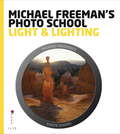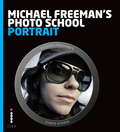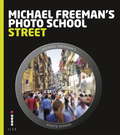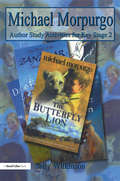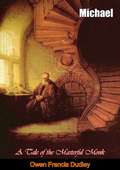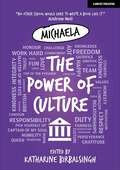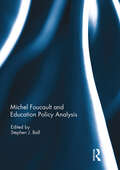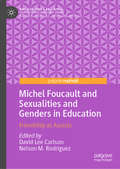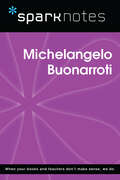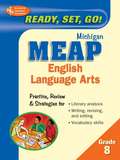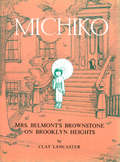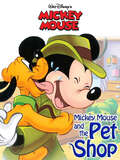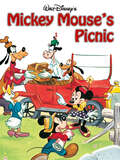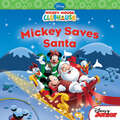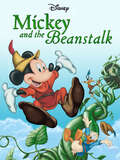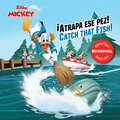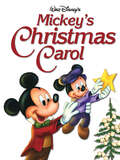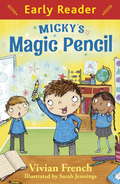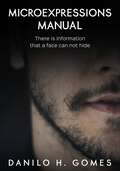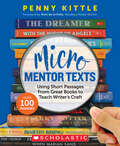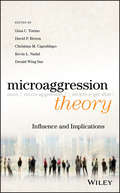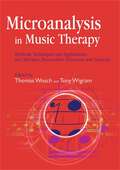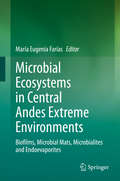- Table View
- List View
Michael Freeman's Photo School: Light And Lighting (Michael Freeman's Photo School)
by Michael FreemanLearn to "read" light in this complete course on the building blocks of photography. Michael Freeman teaches not only how to see the subtle nuances of light and shade, but also how your camera views and records them, to make sure you approach each scene with the optimal settings and appropriate technical know-how.Explore the different ways to approach and capture existing light - from sunlit outdoor portraits to the moody urban landscapes of artificial light - through a comprehensive overview of the many forms of lighting encountered by photographers of all genres. Then tackle the art of adding your own photographic lighting with straightforward, easy-to-grasp tips and techniques for operating your own flash and studio equipment. All the essential lighting accessories are covered, with an emphasis on getting the most out of each piece of gear.You will learn to coax stunning photos out of even the most challenging lighting conditions, and enhance your images by developing your own personal lighting style.
Michael Freeman's Photo School: Portrait (Michael Freeman's Photo School)
by Michael FreemanAt some point, all photographers are called upon to shoot a proper portrait - combining technical skill with personable demeanour to capture someone in their best possible light. Michael Freeman teaches you how to achieve flattering portrait results with a variety of both traditional and modern styles.Learn how to set your subjects at ease and bring out their natural beauty with a friendly yet professional attitude. Feel confident giving directions on posing and stance with a thorough review of the classic approaches, from head-and-shoulder shots to full-length compositions, and everything in between.Take creative control of your portrait sessions by learning to manipulate the light to your own ends - whether that means bouncing sunlight o a reflector or building your own studio setups with multiple fl ash units. The complex science of photographic lighting is explained in straightforward and easy-to-understand language, with abundant and inspirational examples. Finally, master the fundamentals of post-production finishing techniques to make sure every portrait looks its absolute best. Your subjects will thank you for it!
Michael Freeman's Photo School: Street Photography: Essential Aspects Of Street Photography (Michael Freeman's Photo School)
by Michael FreemanThe street aesthetic is more in vogue than ever, and rapidly becoming an essential part of every photographer's repertoire. Subjects are found around every corner, each moment offers a new and fresh perspective, and that excitement and spontaneity make it an ideal training ground for honing the skills needed to anticipate and successfully capture dramatic scenes on the fly.Getting great street shots is much more than just a matter of chance. Michael Freeman details the optimal strategies for anticipating the action before it happens, and the fastest techniques that ensure you're ready with your finger on the shutter for that critical moment. A thorough overview of which equipment is best suited for each particular style lets you make the most of the gear you have, even in the most challenging lighting conditions. And a series of exercises keeps you engaged and alert to the creative potential of countless scenes throughout your daily life.Beyond the gear and technique, you will also learn to think like a street photographer - recognising not just captivating scenes with engaging subjects, but also innovative angles from which to capture them, all with the split-second instinct of a professional.
Michael Morpurgo: MICHAEL MORPURGO (Author Studies)
by Sally WilkinsonThis innovative series is designed to help primary teachers plan focused sessions on the work of popular, well-loved and valued authors, both classic and contemporary. Each book contains a range of activities for use directly in the classroom, covering biographical information about the author; a review of the author's work and a summary of major themes in his/her key texts; key language features of the author; frameworks to help children analyze, evaluate and compare texts, and to develop personal opinions of authors' works; ideas for writing modeled on or developed from key texts; speaking and listening opportunities; drama and role play ideas; and references to video, CD-ROM, websites and ICT activities. Inside each book is a full-color pullout poster illustrating the work of the author, which also has a set of challenges for children on the back. Michael Morpurgo is the author of over 60 books for children, including Sam's Duck, The Butterfly Lion, The Wreck of the Zanzibar, and Kensuke's Kingdom. Beginning with a detailed plan for structuring a half-term's work on Michael Morpurgo, this book presents activities that focus on narrative structure, character development, settings and themes. Activities and games include: focus on biography - writing blurbs, role-playing 'ask the author', creating a magazine article/web page about the author; exploring key themes, including bullies, not liking school, caring for animals, relationships with older people, and farm and country life; creating a character sketch; writing in role; focusing on time with a story web; analyzing setting; and an in-depth study of The Butterfly Lio.
Michael: A Tale of the Masterful Monk
by Owen DudleyAgain, as in his tremendously popular earlier books, Owen Francis Dudley deals with the problems of human happiness. In this new novel his talent for storytelling seeks its expression in highly dramatic incidents which take place in a variety of settings and with a fresh cast of fascinating characters.The action moves across half a world, from England to the South Seas, and begins on a steamer bound for New Zealand, where Father Thornton becomes a confidant of Michael St. Helier. Introverted and unfriendly, this young man in an accident on shipboard behaves in a manner which is interpreted as cowardice. The Masterful Monk finds that extreme sensitivity and an unhappy home life have brought about a morbid revulsion from ugliness and violence and a refusal to accept pain or sacrifice. Recognizing the psychological problem involved, he takes young St. Helier in hand and becomes his friend and mentor. With unflagging interest the reader follows the steps by which, through many trials and adventures, Michael is brought face to face with his own problems and is able, in the end, to confront his future with courage. A tender love story is interwoven in this compelling novel.
Michaela: The Power of Culture
by Katharine BirbalsinghMichaela Community School in Brent, London is one of the most talked-about schools in the UK. In this follow-up to the best-selling book Battle Hymn Of The Tiger Teachers, their teachers further explain how their relentlessly high expectations are helping young people to get great results and be successful.Since opening in 2014, Michaela Community School has blazed a trail and defied many of the received notions about what works best in schools. In Michaela: The Battle For Western Education, staff explore some of the things they have learned since the publication of the original book and further develop the ideology that lies beyond the headlines and social media arguments.Chapters include: Don't be squeamish about scripture - why we teach religion at Michaela; Relationships & systems; National Citizenship and Identity; Teaching National History; Digital Detox; Authority; Original Sin & Christian beliefs at Michaela; Telling kids the truth/teaching personal responsibility; Assessment at Michaela; Loving the difficult kids; The baby in the progressive bath water; The culture of feedback at Michaela; Why is teaching gratitude important?; Parenting the Michaela way
Michaela: The Power of Culture
by Katharine BirbalsinghMichaela Community School in Brent, London is one of the most talked-about schools in the UK. In this follow-up to the best-selling book Battle Hymn Of The Tiger Teachers, their teachers further explain how their relentlessly high expectations are helping young people to get great results and be successful.Since opening in 2014, Michaela Community School has blazed a trail and defied many of the received notions about what works best in schools. In Michaela: The Battle For Western Education, staff explore some of the things they have learned since the publication of the original book and further develop the ideology that lies beyond the headlines and social media arguments.Chapters include: Don't be squeamish about scripture - why we teach religion at Michaela; Relationships & systems; National Citizenship and Identity; Teaching National History; Digital Detox; Authority; Original Sin & Christian beliefs at Michaela; Telling kids the truth/teaching personal responsibility; Assessment at Michaela; Loving the difficult kids; The baby in the progressive bath water; The culture of feedback at Michaela; Why is teaching gratitude important?; Parenting the Michaela way
Michel Foucault and Education Policy Analysis
by Stephen J. BallThe work of Michel Foucault has become a major resource for educational researchers seeking to understand how education makes us what we are. In this book, a group of contributors explore how Foucault’s work is used in a variety of ways to explore the ‘hows’ and ‘whos’ of education policy – its technologies and its subjectivities, its oppressions and its freedoms. The book takes full advantage of the opportunities for creativity that Foucault’s ideas and methods offer to researchers in deploying genealogy, discourse, and subjectivation as analytic devices. The collection as a whole works to makes us aware that we are freer than we think! This book was originally published as a special issue of the Journal of Education Policy.
Michel Foucault and Sexualities and Genders in Education: Friendship as Ascesis (Queer Studies and Education)
by Nelson M. Rodriguez David Lee CarlsonThis book examines, within the context and concerns of education, Foucault’s reflections on friendship in his 1981 interview “Friendship as a Way of Life.” In the interview, Foucault advances the notion of a homosexual ascesis based on experimental friendships, proposing that homosexuality can provide the conditions for inventing new relational forms that can engender a homosexual culture and ethics, “a way of life,” not resembling institutionalized codes for relating. The contributors to this volume draw from Foucault’s reflections on ascesis and friendship in order to consider a range of topics and issues related to critical studies of sexualities and genders in education. Collectively, the chapters open a dialogue for researchers, scholars, and educators interested in exploring the importance and relevance of Foucault’s reflections on friendship for studies of schooling and education.
Michelangelo Buonarroti (SparkNotes Biography Guide)
by SparkNotesMichelangelo Buonarroti (SparkNotes Biography Guide) Making the reading experience fun! SparkNotes Biography Guides examine the lives of historical luminaries, from Alexander the Great to Virginia Woolf. Each biography guide includes:An examination of the historical context in which the person lived A summary of the person&’s life and achievements A glossary of important terms, people, and events An in-depth look at the key epochs in the person&’s career Study questions and essay topics A review test Suggestions for further reading Whether you&’re a student of history or just a student cramming for a history exam, SparkNotes Biography guides are a reliable, thorough, and readable resource.
Michigan MEAP Grade 8 English Language Arts
by Editors of REA Dana PassanantiREA ... Real review, Real practice, Real results. REA's Michigan Grade 8 MEAP Reading & Writing Study Guide! Fully aligned with the new MEAP English/Language Arts assessment exam that reflects the 2004 Michigan ELA Grade Level Content Expectations (GLCE) Are you prepared to excel on this state high-stakes assessment exam? * Take the diagnostic Pretest and find out what you know and what you should know * Use REA's advice and tips to ready yourself for proper study and practice Sharpen your knowledge and skills * The book's full subject review refreshes knowledge and covers all topics on the official exam, including word study, literary analysis, drafting, revising, and editing to reinforce key English language lessons * Smart and friendly lessons reinforce necessary skills * Key tutorials enhance specific abilities needed on the test * Targeted drills increase comprehension and help organize study * Color icons and graphics highlight important concepts and tasks Practice for real * Create the closest experience to test-day conditions with a full-length practice Posttest * Chart your progress with detailed explanations of each answer * Boost confidence with test-taking strategies and focused drills Ideal for Classroom, Family, or Solo Test Preparation! REA has helped generations of students study smart and excel on the important tests. REA's study guides for state-required exams are teacher-recommended and written by experts who have mastered the test.
Michiko or Mrs.Belmont's Brownstone on Brooklyn Heights
by Clay LancasterMICHIKO is a little Japanese girl who, all alone, makes the long journey from a small country village in Japan to her new home and life in Brooklyn Heights.This is how Clay Lancaster's delightful picture-story for young readers begins. And before it ends, Michiko and her readers share many experiences-some happy, some sad, some surprising, and some just funny-as Michiko learns how life is lived in America.Immediately Michiko learns that Japan and America are quite different-New York's tall buildings, her new house (an old brownstone), her new guardian (Mrs. Belmont), and even American food are things she must get used to.At times Michiko finds herself frightened, or excited, or just plain bewildered about things like school, Thanksgiving, and Christmas. Through Michiko, readers get the wonderful experience of rediscovering those American customs and traditions so often overlooked or taken for granted. Besides the typically American scenes and events, Michiko and her classmates also share a delightful surprise in the Brooklyn Botanic Garden.Above all, Michiko's readers will see those human values of warmth, kindness, and generosity which every person in the world holds in common.
Mickey Mouse and the Pet Shop
by DISNEY BOOK GROUPMickey works at a pet shop and takes care of a troublesome puppy.
Mickey Mouse's Picnic
by Disney Book GroupOne beautiful summer day, Mickey and Minnie Mouse decide to go on a picnic! They invite Pluto, Goofy, Daisy Duck, and Clarabelle Cow. They do not invite Donald Duck...something always goes wrong when he is around! When they drive away, no one notices that Donald saw them leave him behind! So when the friends reach the picnic grounds, they decide to go have fun before eating. But when they return, their picnic basket disappeared! Where could it have gone?
Mickey Saves Santa
by Disney PressMickey and his friends are all ready for a Christmas Eve sleepover at the Clubhouse. They've written their lists and can't wait for Santa Claus to arrive. But there's a big problem at the North Pole and Santa won't be coming unless he gets some help. Join your favorite Clubhouse friends as they set out to save the day and rescue Christmas.
Mickey and the Beanstalk
by Disney Book GroupIn Happy Valley, the sun is always shining and everything is pretty and green. A magical harp sings a beautiful song, casting a spell of peace over the valley. But when the harp suddenly disappears, Happy Valley turns dark, and everything stops working and growing. Farmer Mickey, Farmer Donald, and Farmer Goofy are awfully hungry, so when Mickey decides to sell their cow in exchange for food, he returns with three magic beans! Don't miss this retelling of the classic tale of Jack and the Beanstalk—with a Disney twist!
Mickey and the Roaster Racers: Catch that Fish! / ¡Atrapa ese pez! (English-Spanish)
by Disney Book GroupFollow along with Mickey and his friends in this English-Spanish bilingual storybook. Mickey Mouse y Goofy están muy emocionados por su viaje de pesca anual, pero cuando sus amigos deciden unirse a ellos, ¡la tranquila excursión de Goofy y Mickey se convierte en una misión de rescate! Mickey Mouse and Goofy are excited for their annual fishing trip. But when the other Roadster Racers decide to join them, Mickey and Goofy’s quiet outing turns into a rescue mission!
Mickey’s Christmas Carol
by DISNEY BOOK GROUPBah, humbug! Ebenezer Scrooge doesn’t understand why everyone is so cheerful around Christmas time. Rich and greedy, Scrooge doesn't even want to let his clerk, Bob Cratchit, spend time with his family on Christmas Eve. But when Scrooge goes home late one night, a ghost tells him that he will be visited by three spirits—and that he must listen to what they have to say. Will Scrooge be able learn the true meaning of Christmas, or will he be greedy and lonely forever? Don't miss this retelling of the classic tale of A Christmas Carol—with a Disney twist!
Micky's Magic Pencil (Early Reader)
by Vivian FrenchEarly Readers are stepping stones from picture books to reading books. A blue Early Reader is perfect for sharing and reading together. A red Early Reader is the next step on your reading journey.Mickey's gran has sent him a magical pencil. It's red and yellow and blue and green, and Mickey can't wait to use it. But there always seems to be someone who needs the help of its magic powers more than Mickey does...A lovely story about friendship and togetherness, told in Vivian French's heartwarming style. With full colour illustrations on every page from Sarah Jennings, MICKY'S MAGIC PENCIL is guaranteed to delight.
Micro Expressions Manual: There is information that a face can not hide
by Danilo H. GomesBody language is one of the most complex and effective studies in psychology and psychiatry. Reading human gesture techniques are present in police investigations, psychotherapy clinics, schools and other related places. While generally being assertive, observing body gestures can provide some confusing and ambiguous information. When dealing with micro facial expressions, the chances of getting it right are very high, in addition, your observation provides more accurate information.
Micro Mentor Texts: Using Short Passages From Great Books To Teach Writer's Craft
by Penny KittleAt a time when students' attention is being pulled in many directions, writing expert Penny Kittle shows us the power of helping them to focus in and communicate clearly. She does that through the study of "micro mentor texts," excerpts from acclaimed books, and the decisions authors make to craft those texts so they deeply engage readers. Her book includes dozens of short texts and mini-lessons based on them--as well as many practice opportunities for students and demonstration videos for you.
Micro-Life Student Book
by National Science FoundationAs you examine the activities in this book, you may wonder, "Why does this book look so different from other science books I've see?"The reason is simple: it is a different kind of science program, and only some of what you will learn can be seen by leafing through this book!
Microaggression Theory: Influence and Implications
by Derald Wing Sue Kevin L. Nadal Gina C. Torino David P. Rivera Christina M. CapodilupoGet to know the sociopolitical context behind microaggressions Microaggressions are brief, everyday exchanges that send denigrating messages to certain individuals because of their group membership (e.g., race, gender, culture, religion, social class, sexual orientation, etc.). These daily, common manifestations of aggression leave many people feeling vulnerable, targeted, angry, and afraid. How has this become such a pervasive part of our social and political rhetoric, and what is the psychology behind it? In Microaggression Theory, the original research team that created the microaggressions taxonomy, Gina Torino, David Rivera, Christina Capodilupo, Kevin Nadal, and Derald Wing Sue, address these issues head-on in a fascinating work that explores the newest findings of microaggressions in their sociopolitical context. It delves into how the often invisible nature of this phenomenon prevents perpetrators from realizing and confronting their own complicity in creating psychological dilemmas for marginalized groups, and discusses how prejudice, privilege, safe spaces, and cultural appropriation have become themes in our contentious social and political discourse. Details the psychological effects of microaggressions in separate chapters covering clinical impact, trauma, related stress syndromes, and the effect on perpetrators Examines how microaggressions affect education, employment, health care, and the media Explores how social policies and practices can minimize the occurrence and impact of microaggressions in a range of environments Investigates how microaggressions relate to larger social movements If you come across the topic of microaggressions in your day-to-day life, you can keep the conversation going in a productive manner—with research to back it up!
Microanalysis in Music Therapy: Methods, Techniques and Applications for Clinicians, Researchers, Educators and Students
by Tony Wigram Barbara L Wheeler Thomas WoschIn the context of music therapy, microanalysis is the detailed analysis of that short period of time during a music therapy session during which some kind of significant change takes place. These moments are crucial to the therapeutic process, and there is increasing interest amongst music therapists in understanding how they come about and whether there are ways of initiating them. The contributors to this groundbreaking book look at methods of micro process analyses used in a variety of music therapy contexts, both clinical and research-based. They outline their methods, which include using video and audio materials, interviewing, and monitoring the client's heart rate, and also give examples of the practical application of microanalysis from their clinical experience, including work with clients who have psychiatric illness, autism and other conditions. Microanalyses in Music Therapy provides a wealth of important theoretical and practical information for music therapy clinicians, educators and students.
Microbial Ecosystems in Central Andes Extreme Environments: Biofilms, Microbial Mats, Microbialites and Endoevaporites
by María Eugenia FaríasThe Central Andean Altiplane represents a unique extreme environment due to its high altitude, closed basins that modulate the salt pans and saline wetlands surrounded by deserts, as well as the considerable influence of volcanic activity. UV radiation, arsenic content, high salinity, alkalinity and low dissolved oxygen levels, together with extreme daily temperature fluctuations and oligotrophic conditions, shape an environment that resembles the early Earth and, even more, extraterrestrial conditions. By developing simple biofilms stratified microbial mats or complex microbialites, extreme microbial ecosystems, colonize and thrived in different environments like salt flats, wetlands, lakes volcano vents, geysers and deserts. This book presents our current understanding of these amazing ecosystems, providing a basis for their protection and sustainable utilization. The main audience for this book included researchers and graduate students as well as professionals working in the government, mining industry and similar activities.
